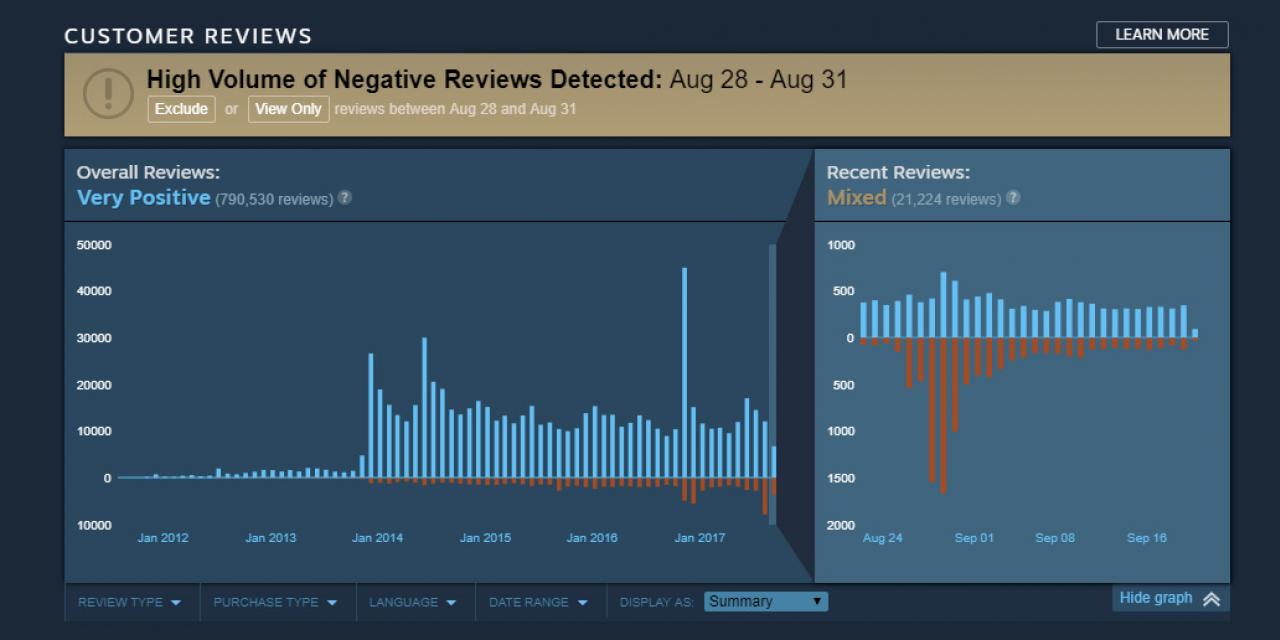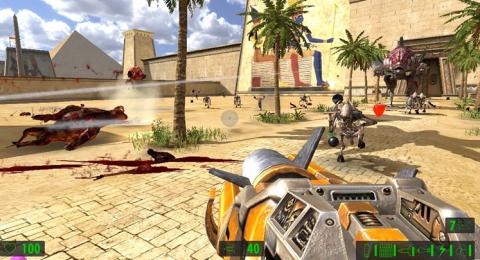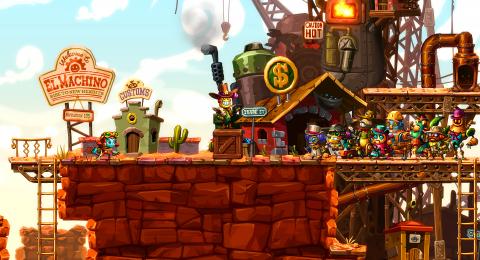
Valve has implemented a new graph system to help combat the problem of review bombing, which although indicative of player opinions of a game and possibly its developer too, isn't always a reflection of how much fun a person may have from playing a game. To highlight why a game's rating might be lower than expected, potential purchasers can now look at a graph of how the game has been rated over time.
There are many reasons a review bomb might happen. A developer may introduce a feature that fans don't like, or one of the studio's staff might say something on Twitter that's politically antagonistic to their player base. Or it could just be a secluded internet community decided to do something for the "lulz."
Although some of these may be a good enough reason for someone to not buy a game, they are lumped in with negative reviews that are there because of something completely unrelated to how fun a game is, so Valve wants to make it easier to differentiate between the different negative opinions of a game.
Valve did consider a few different potential methods for fixing this issue, one of them being putting temporary holds on game reviews for specific titles when surprising activity occurs, such as a heavy influx of negative reviews, but that could be exploitable by developers and could leave fans unable to voice concerns over certain practices.
Ultimately it settled on the idea of showing users more data. Now, when you look at a game's reviews, you can see how they've tracked over time. That should give you some idea of when review bombs occurred and whether that's indicative of an overall negative trend, or if it was a temporary hiccup caused by something that isn't necessarily to do with how much fun you might have playing a particular game.








